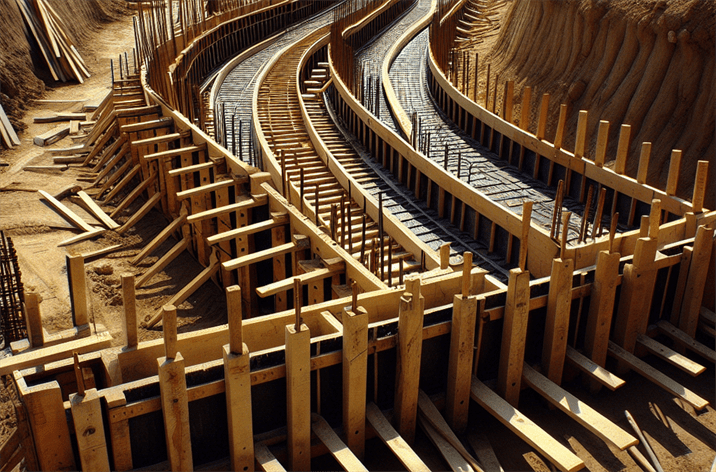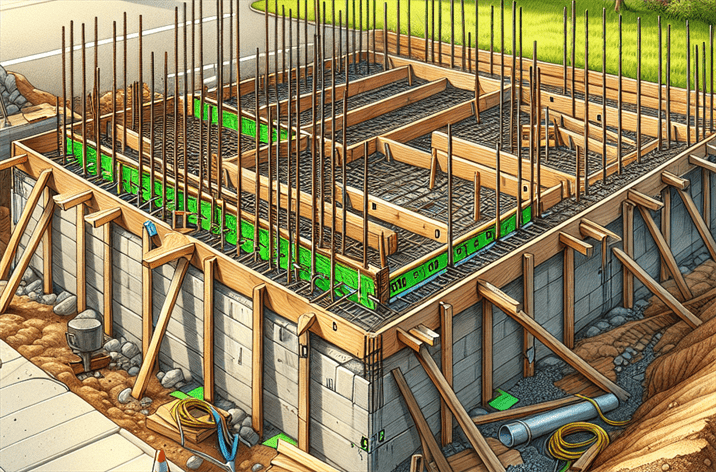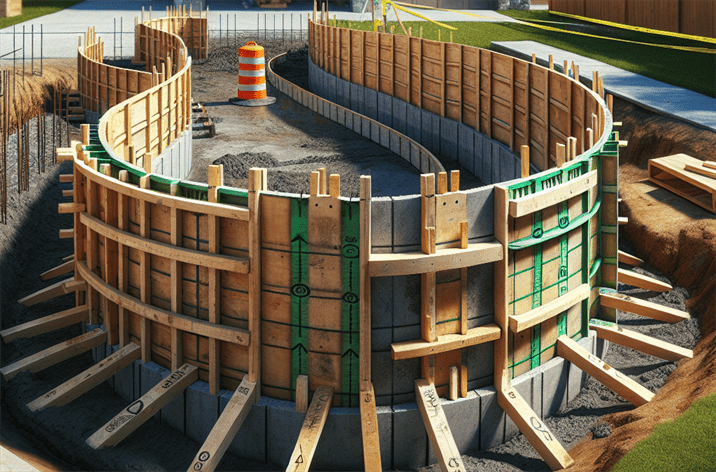The Comprehensive Guide to Wooden Marking Stakes: Importance, Applications, and Best Practices
Introduction
Did you know that wooden marking stakes are not just simple pieces of wood but vital tools that can significantly enhance the accuracy and efficiency of construction projects? This often-overlooked element in the construction industry plays a crucial role in site organization, project management, and boundary definition. As construction projects grow in complexity and scale, the demand for reliable and effective materials, like wooden marking stakes, has surged.
In recent years, there has been a noticeable trend towards sustainable construction practices, where eco-friendly materials are incorporated into building processes. Wooden marking stakes fit perfectly into this trend due to their renewable nature and versatility. Studies show that using wooden stakes can lead to better project outcomes by enhancing communication among teams and ensuring precise measurements.
By the end of this article, you will have a comprehensive understanding of what wooden marking stakes are, their historical context, how they work, their benefits, and best practices for usage. Whether you’re a construction professional, a DIY enthusiast, or simply curious about the tools that shape our built environment, this guide will provide valuable insights.
What are Wooden Marking Stakes?
Definition
Wooden marking stakes are slender, pointed pieces of wood used primarily in construction and landscaping to mark boundaries, guide excavations, and delineate areas for specific purposes. They come in various sizes and types, often made from treated or untreated wood, depending on their intended use. These stakes are essential for ensuring that construction layouts are accurate and that project specifications are met.
Historical Context
The use of wooden stakes can be traced back to ancient civilizations. Historically, builders utilized wooden markers to outline property lines, manage land surveys, and structure construction sites. In the modern era, with the advent of advanced technology, wooden marking stakes have evolved but still retain their fundamental purpose. They are now often supplemented with advanced surveying tools, yet their simplicity and effectiveness continue to make them a go-to option for many professionals in the field.
Importance of Wooden Marking Stakes
The relevance of wooden marking stakes in today’s construction landscape cannot be overstated. As projects become more intricate, the need for precision has intensified. Wooden marking stakes serve as a reliable method for defining spaces, guiding machinery, and ensuring that work is executed according to plan. Furthermore, their eco-friendly profile aligns with the growing emphasis on sustainability in construction practices.
Wooden Marking Stakes in the Context of Landscaping
In landscaping, wooden marking stakes are utilized to define planting areas, outline design features, and assist in the layout of irrigation systems. Their versatility makes them valuable not just in construction but also in horticultural applications.
Key Players and Contributors
Several companies have revolutionized the market for wooden marking stakes, focusing on sustainability and durability. Organizations that prioritize eco-friendly practices are leading the charge in promoting wooden marking stakes as a preferred choice. For example, companies that provide affordable wooden stakes for construction use often focus on sourcing wood from responsibly managed forests, making them an attractive option for environmentally conscious builders.

How Does Wooden Marking Stakes Work?
The Mechanics of Wooden Marking Stakes
Using wooden marking stakes is a straightforward process, but it requires some knowledge for optimal results. Here’s a step-by-step guide on how they work:
- Site Assessment: Before placing stakes, assess the project site to determine the boundaries and necessary markers.
- Marking Points: Use a chalk line or measuring tape to identify key points where the stakes will be placed.
- Driving Stakes: Using a hammer or mallet, drive the stakes into the ground at the marked points. Ensure they are firmly anchored and upright.
- Labeling: If needed, label the stakes with flags or paint to signify different areas or instructions.
- Verification: Double-check the placements against project plans to confirm accuracy.
Technological Foundations of Wooden Marking Stakes
While wooden marking stakes are primarily a manual tool, technology has enhanced their effectiveness. For instance, GPS technology and laser levels can help in plotting points more accurately before placing stakes. These tools allow construction teams to align wooden stakes with precision, reducing the margin of error.
Real-World Applications of Wooden Marking Stakes
Wooden marking stakes find their application in various fields, including:
- Construction Projects: They are essential for layout marking and boundary definition.
- Land Surveying: Used to establish property lines and demarcate survey points.
- Agriculture: Assist in planting layouts and defining irrigation paths.
- Landscaping: Help in outlining garden features and planting zones.
Case Studies/Examples of Wooden Marking Stakes in Action
- Residential Construction: A recent residential project utilized wooden marking stakes to outline the foundation and driveways, ensuring that measurements adhered to local zoning laws and architectural plans.
- Land Surveying: A surveying firm employed wooden marking stakes to establish property boundaries for a large estate, demonstrating how these simple tools can impact land ownership clarity.
Benefits and Drawbacks of Wooden Marking Stakes
Benefits
- Cost-Effective: Wooden marking stakes are generally affordable and readily available.
- Eco-Friendly: Being made from natural materials, they are a sustainable choice when sourced responsibly.
- Versatile: Can be used in various applications, from construction to gardening.
Drawbacks
- Durability: Wooden stakes can deteriorate over time, especially when exposed to the elements unless treated properly.
- Visibility: They may not be as visible as plastic or metal stakes, which can be a concern in busy construction sites.
The Benefits of Wooden Marking Stakes
Why Use Wooden Marking Stakes?
Investing in wooden marking stakes can lead to a multitude of advantages for construction and landscaping projects. Here are some key benefits:
Improved Efficiency and Productivity
Using wooden marking stakes enhances workflow by clearly delineating project boundaries and areas of focus. This clarity allows teams to work more efficiently and reduces the likelihood of errors that could lead to costly delays. For instance, proper placement of stakes ensures that excavation is carried out in the right locations, streamlining the construction process.
Cost-Effectiveness
The affordability of wooden marking stakes makes them a practical choice for many projects. When sourcing affordable stakes and lath for construction needs, teams can find options that fit their budget without compromising quality. Moreover, their reuse potential can lead to further cost savings.
Examples of Cost Savings from Wooden Marking Stakes
- Project A: A construction firm reported a 15% reduction in costs by utilizing wooden marking stakes instead of more expensive alternatives, allowing them to allocate resources to other areas of the project.
- Project B: A landscaping company saved on equipment rental costs by using wooden stakes for layout, avoiding the need for electronic surveying equipment.
Enhanced User Experience with Wooden Marking Stakes
Wooden marking stakes improve the user experience for both construction workers and project managers. By providing clear markers, they enhance communication and ensure that everyone involved in the project is on the same page. This alignment promotes teamwork and reduces misunderstandings.
Long-Term Benefits of Wooden Marking Stakes
The long-term use of wooden marking stakes can lead to more sustainable practices in construction and landscaping. Their biodegradable nature means they contribute less to landfill waste compared to plastic alternatives. Moreover, when sourced from sustainable forests, their use supports responsible forestry practices.
Conclusion
In summary, wooden marking stakes are an indispensable tool in the construction and landscaping industries. Their simplicity belies their importance, as they play a critical role in ensuring project accuracy, efficiency, and sustainability. As the industry continues to evolve, embracing eco-friendly practices and innovative technologies, wooden marking stakes remain a reliable choice for professionals at all levels.
If you’re considering your next construction or landscaping project, investing in high-quality, durable wooden stakes for construction is a step towards ensuring successful outcomes. With their proven benefits and versatility, wooden marking stakes are sure to enhance your project experience.
For further insights into the practical applications and best practices regarding wooden marking stakes, check out our resources on best practices for using stakes and lath in construction and how to set up site grading stakes like a pro. Embrace the power of simplicity and effectiveness that wooden marking stakes bring to your projects!
Resource Links:
1. Woodland Direct – Offers a variety of wooden marking stakes suitable for landscaping and garden projects.
2. Gardener’s Supply Company – Provides durable wooden marking stakes designed for easy identification of plants and garden layouts.
3. Amazon – Features a wide selection of wooden marking stakes from various brands for gardening and crafting needs.














